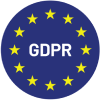Quick Summary
- Customer service is reactive support, while customer experience is the end-to-end journey across every touchpoint.
- Service focuses on single interactions; CX is holistic, proactive, and requires teamwork across departments.
- Service performance is measured through CSAT and CES, while CX relies on NPS and journey KPIs.
- Align both CX and customer service through shared data, journey mapping, and closed-loop workflows to strengthen loyalty and long-term growth.
What are Customer Experience and Customer Service?
Customer service and customer experience (CX) are often used interchangeably, yet they serve different purposes in shaping how customers perceive a brand. Customer service focuses on helping customers solve immediate issues during specific interactions, typically after a purchase and usually initiated by the customer. In contrast, customer experience (CX) represents the broader, proactive orchestration of every interaction across the entire journey, shaping how customers perceive and connect with the brand.
Understanding the difference between customer service and customer experience clarifies ownership, measurement, and investment. When teams align service efficiency with a strong end-to-end experience, they can reduce friction, strengthen relationships, and deliver the kind of loyalty-driven growth that defines exceptional customer success.
Customer Service vs. Customer Experience: The Basics
Customer service refers to the advice and assistance provided to resolve problems, returns, or questions, frequently through channels such as phone, chat, or email. It focuses on helping customers when they need support and directly influences satisfaction, trust, and retention. However, it represents only one step within a much broader journey.
Customer experience (CX) encompasses every touchpoint from discovery to renewal, including marketing, sales, product usage, and post-purchase interactions. It defines how customers feel about the brand and shapes long-term loyalty.
Service is a subset of CX. Service is a single moment that influences, but does not define, the overall relationship.
While customer service is typically reactive, responding when customers reach out, CX anticipates needs and proactively designs seamless, connected journeys. True CX success requires collaboration across marketing, product, service, and operations, while frontline support teams primarily own service performance.
Key Differences and Metrics That Define Success
Customer service and customer experience (CX) both aim to build loyalty but operate at different levels. Service focuses on short-term satisfaction by resolving immediate needs, while CX drives long-term engagement by shaping the entire customer journey.
| Aspect | Customer Service | Customer Experience (CX) |
|---|---|---|
| Objective | Quick, effective problem resolution to ensure immediate satisfaction | Consistent, positive interactions that create emotional connection, advocacy, and trust |
| Timeframe | Transactional and point-in-time, such as handling a question or processing a return | Spans the entire lifecycle, from first impression to renewal |
| Proactivity | Reactive, triggered when customers need help | Proactive, anticipates needs and prevents friction |
| Ownership | Managed by frontline support teams | Cross-functional collaboration, shared across marketing, product, operations, and leadership |
| Metrics | CSAT and CES | NPS and broader CX metrics like conversion, adoption, renewal, and sentiment trends |
| Technology | Ticketing systems and agent assist tools | Voice of Customer (VoC) platforms, journey analytics, and orchestration systems |
| Example | A courteous agent who resolves an issue quickly. | A seamless, personalized journey that prevents issues altogether. |
Bringing It Together: Aligning Service with CX Impact
Customer service and customer experience deliver the strongest results when they operate as one connected system. When support insights feed into CX strategies, every interaction becomes a data point that drives improvement, consistency, and loyalty. The goal is to turn each service exchange into an opportunity to enhance the overall journey.
Share data
Feed support outcomes, CSAT, and CES metrics into CX platforms to uncover friction points, highlight recurring pain areas, and guide process enhancements upstream.
Map journeys
Integrate service touchpoints into customer journey maps to clarify ownership, define key “moments that matter,” and prioritize proactive guidance that prevents frustration before it occurs.
Close the loop
Automate alerts for low satisfaction scores, assign owners, and track follow-ups to strengthen accountability, rebuild trust, and reduce repeat contacts.
Train and coach
Convert frontline insights into improved content, better macros, and coaching opportunities that ensure brand-aligned and empathetic responses.
Proactive service
Use FAQs, self-service portals, and proactive notifications to anticipate needs and shift service from reactive to predictive.
Measure holistically
Combine service KPIs with NPS, retention, and conversion data to connect everyday interactions with long-term CX impact and measurable business growth.
Turning Every Interaction into Experience
Customer service focuses on solving immediate needs, while customer experience shapes the overall relationship and long-term perception of a brand. When both align, organizations reduce customer effort, strengthen trust, and increase loyalty at every stage of the journey.
Aligning ownership, metrics, and data flows transforms service insights into meaningful improvements that customers notice. Shared visibility, accountability, and continuous feedback ensure that every resolution contributes to growth, consistency, and a better overall experience.
Proactive CX elevates each interaction beyond resolution, turning ordinary transactions into personal connections and everyday moments into memorable experiences that inspire satisfaction, loyalty, and lasting advocacy.
Ready to elevate your customer experience strategy? Request a personalized demo today to see how Sogolytics can help you turn every interaction into an opportunity for lasting loyalty and growth.
FAQs: Understanding Service and Experience in Practice
Is customer service part of customer experience, and where do their responsibilities begin and end across the journey?
Yes. Customer service handles direct issue resolution in specific interactions, such as support calls or chats. Customer experience spans all touchpoints in the journey, including marketing, sales, product use, and support, and shapes overall perception and loyalty.
Which metrics best measure service versus customer experience, and how should they be reported together for leaders?
Service performance is measured with CSAT and CES for transactional outcomes. Customer experience uses NPS, retention, and sentiment trends. Both sets of metrics should appear together on integrated dashboards for a unified view.
How can support teams influence upstream CX design to proactively lower effort and prevent repeat contacts?
Support teams can share recurring issue data, highlight friction points, and collaborate with product, marketing, and operations on process or design improvements. This input helps prevent problems, lower effort, and reduce repeat contacts.
What governance model clarifies ownership for service and CX while aligning incentives and priorities?
Effective governance combines cross-functional leadership, journey owners, and shared KPIs. This structure aligns service efficiency with broader CX outcomes and ensures that marketing, operations, support, and executives work toward the same goals.












